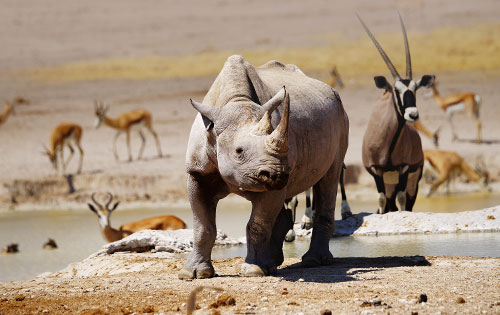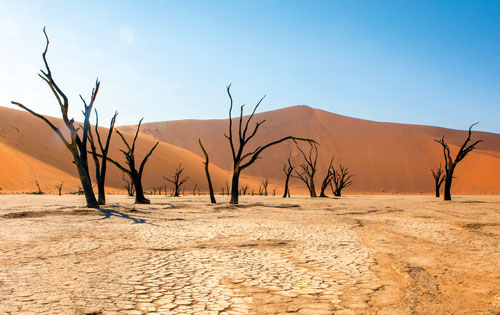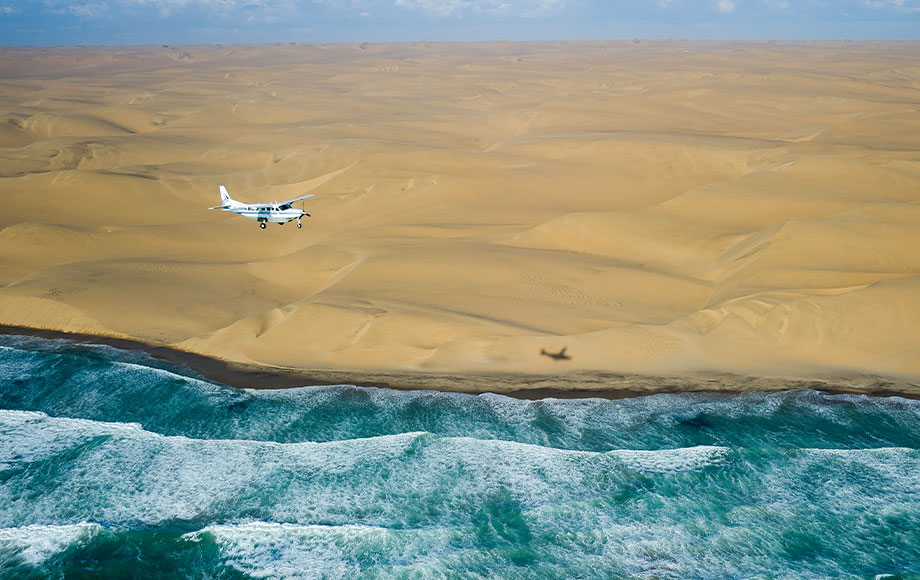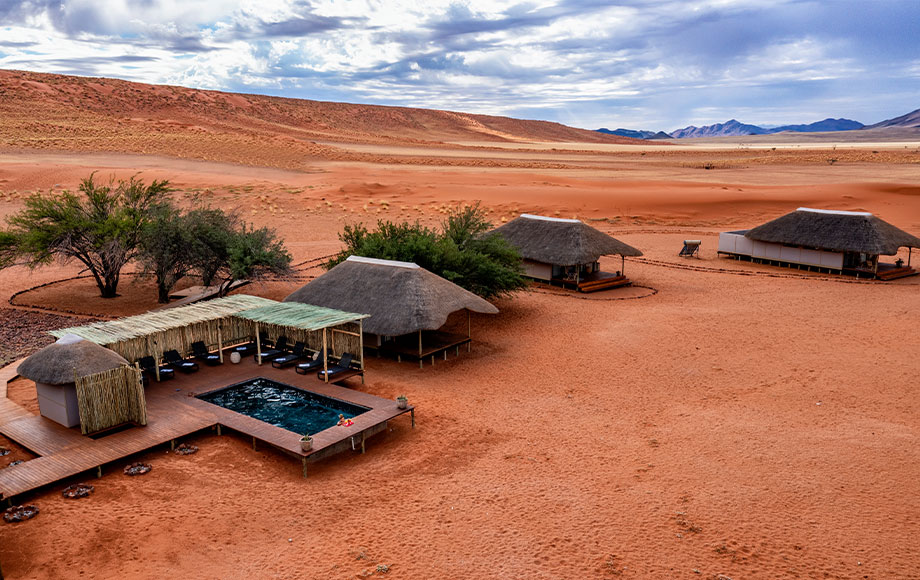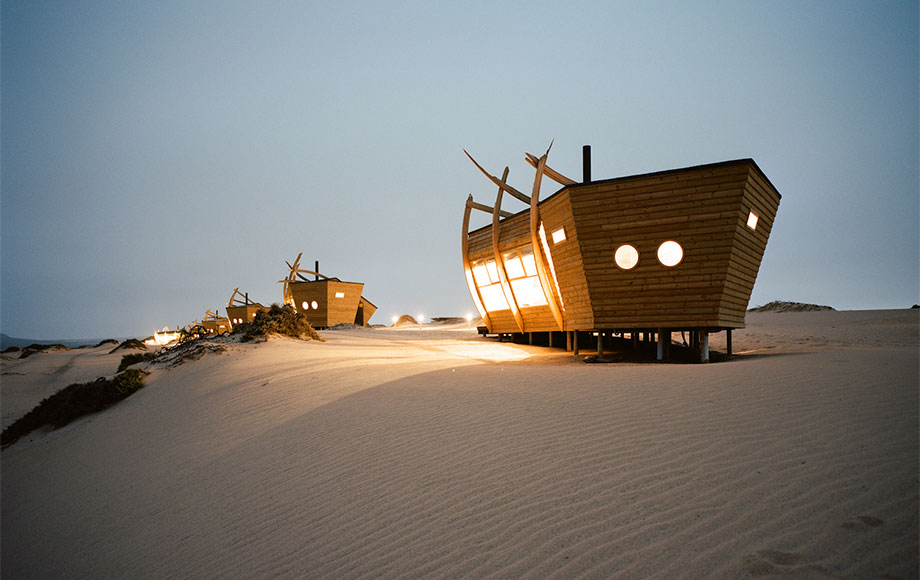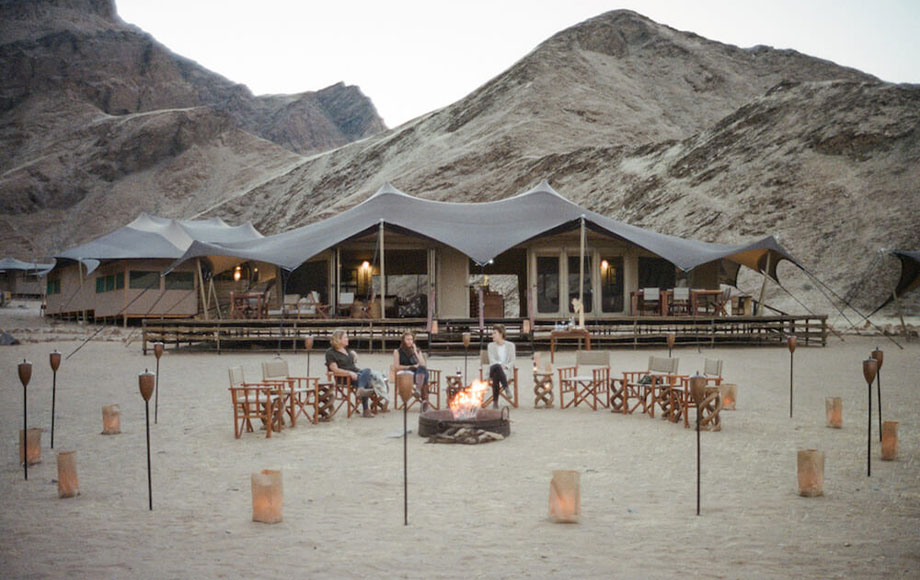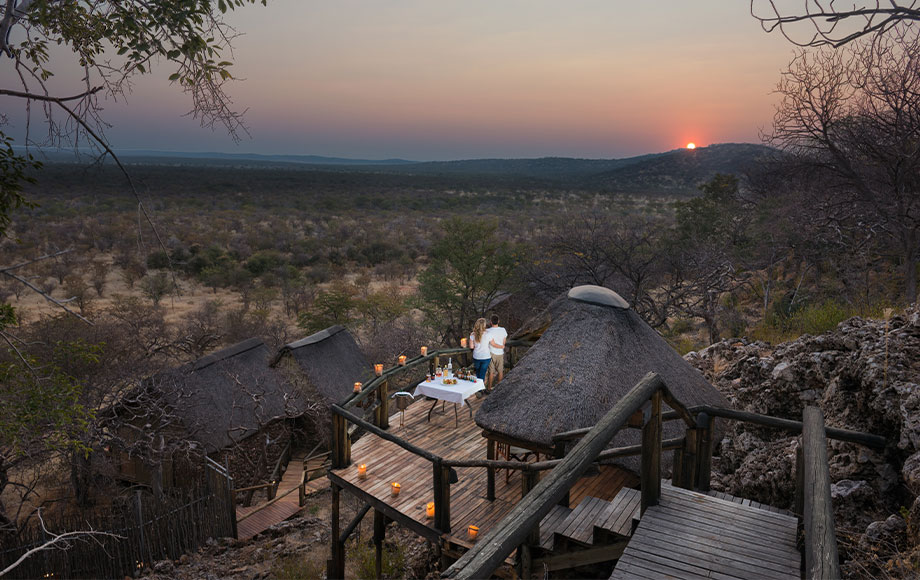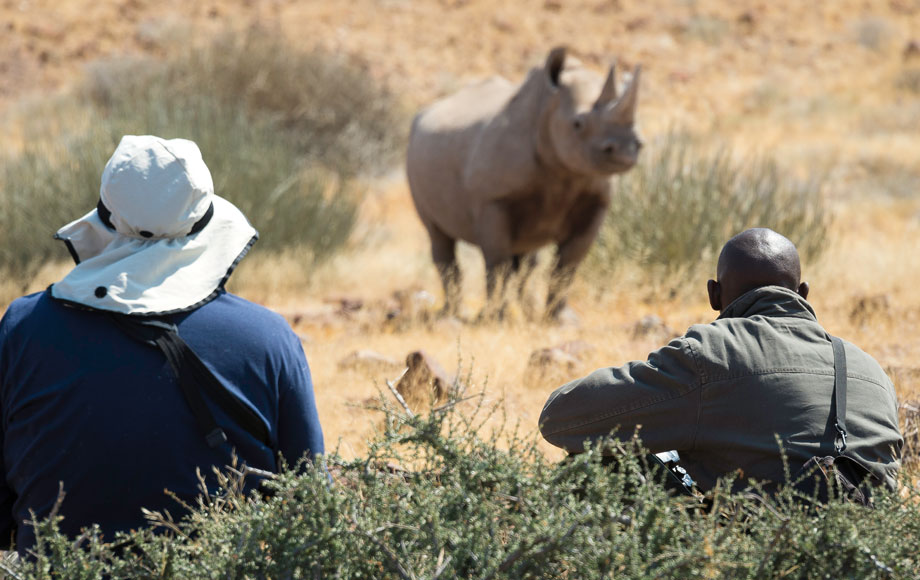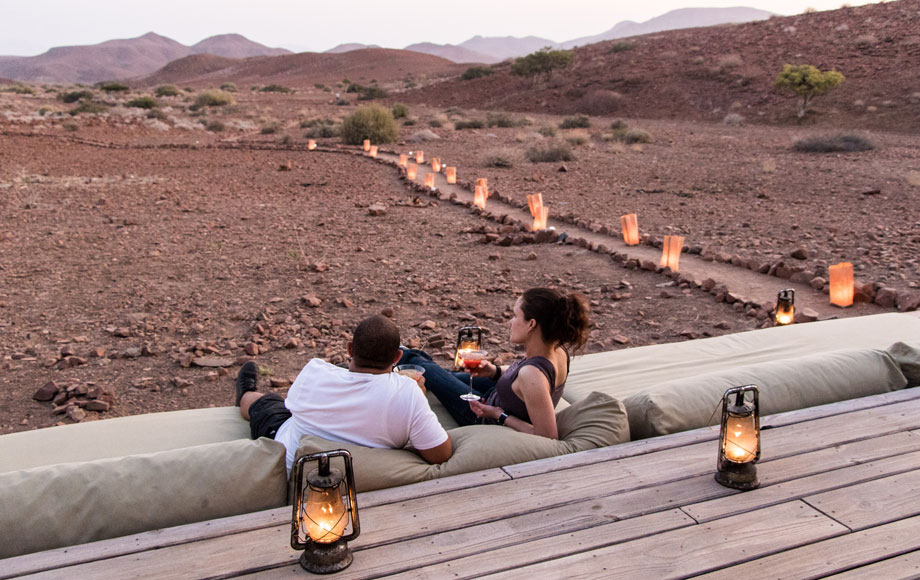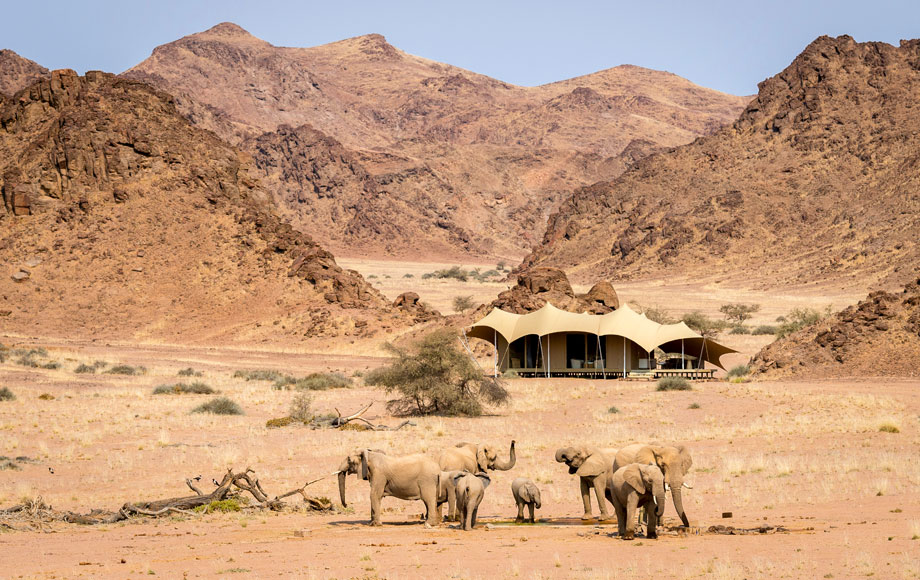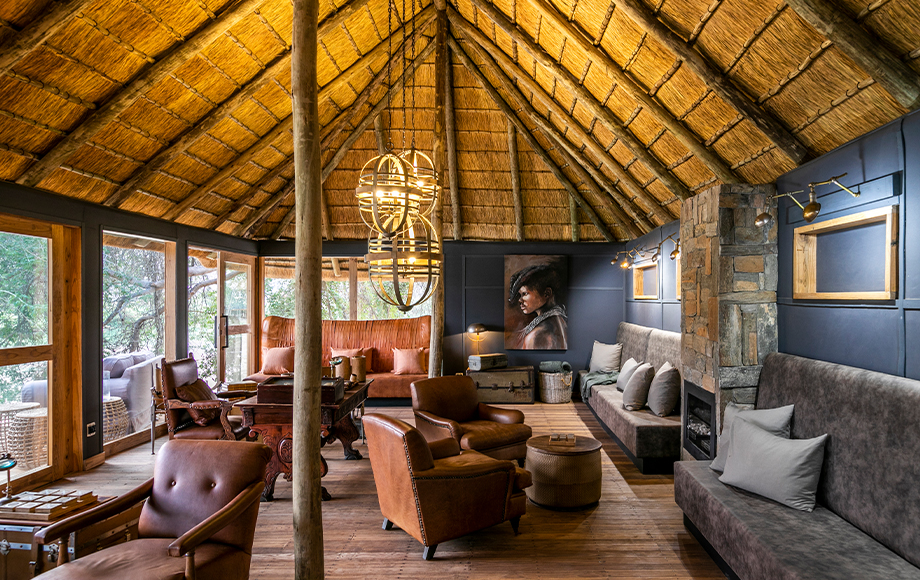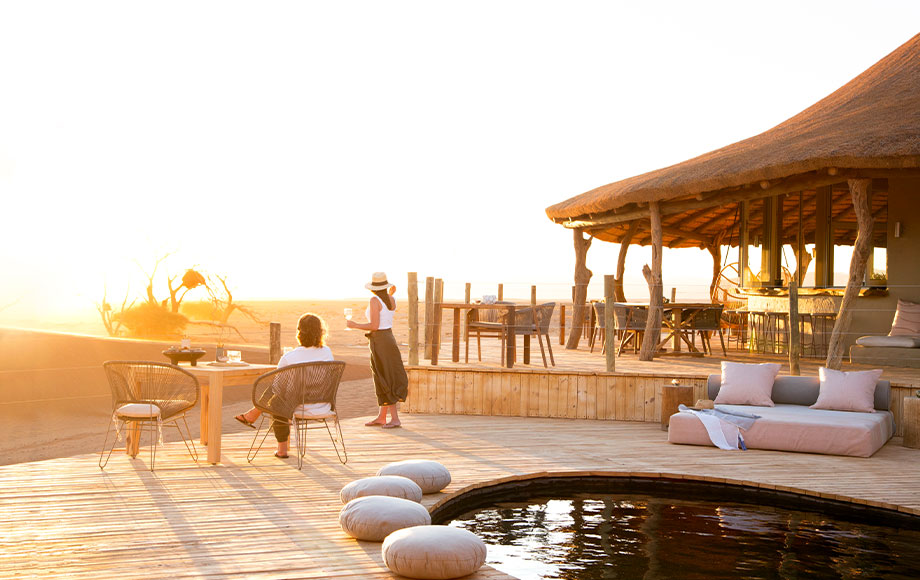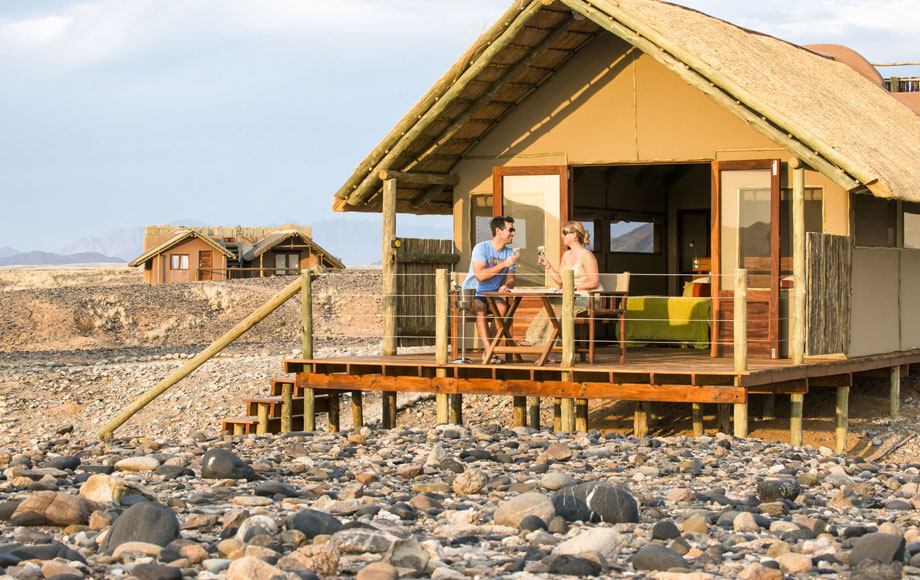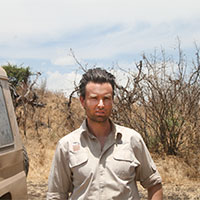Vast and stunningly beautiful Namibia
Namibia is a timeless land of stark deserts and endless blue skies inhabited by strange wildlife who have adapted to the harsh environment. It has the highest sand dunes in the world, huge shimmering plains, rugged mountains, as well as the mysterious and aptly named Skeleton Coast. The country’s famous Etosha National Park is a wildlife reserve on a vast salt pan whose perennial springs attract elephant, black rhino, lion, cheetah, zebra, wildebeest, springbok and gemsbok. Due to scarcity of water in the driest months, it is not uncommon to find a “Noah’s ark” scenario here – where species of all shapes and sizes are found gathered around the few remaining waterholes.
The Skeleton Coast National Park on the countries northwest coastline is one of the planets most unforgiving environments. Most of the park is accessed only by air and the desolate coastline is an incredible sight to behold. Cape fur seals visit the coastline every year to mate and give birth as well as hunt for fish during November and December. Over 200,000 seals have been seen at once in the colony at Cape Cross Seal Reserve.
The Namib-Naukluft National Park is another awe-inspiring destination filled with magical natural wonders. Highlights include the remarkable Sossusvlei dunes and famous skeleton trees of Dead Vlei – standing on the white salt pans against a backdrop of bright orange dunes. Hot air ballooning is also a popular way to discover the ancient landscape.
Although the human population is small, there is a rich tapestry of cultures to be found throughout Namibia; including Bushmen hunter-gatherers, Herero pastoralists in their Victorian dress and the nomadic Himba of the far north.
If you are short on time, the best way to cover the enormous distances between deserts, dunes and oases is by scheduled light aircraft. Aside from saving you hours on the road, flights provide breathtaking views of this extraordinary land from the air.
The Skeleton Coast
Spectacular Sossusvlei
Seal colony at Cape Cross
Etosha National Park
Serra Cafema and Kunene River
Damaraland and Twyfelfontein
Namibia Tours and Safaris
Explore some of the best holidays & experiences that we can custom-design for you. All of our safaris and tours are tailor-made to suit your interests, budget and timeframe.
Accommodation in Namibia
Namibia is home to some of Africa’s most remote (and luxurious) safari lodges. These intimate properties often accommodate as few as 16 guests, providing complete comfort and service in some of the world’s most extreme environments. Many camps and lodges boast lavish decks, beautiful communal areas and bars, whilst some even have small, private plunge pools. Below are some of our handpicked accommodation options in Namibia, carefully selected for their superior safari locations, service and level of comfort.
Talk to one of our Africa Experts
When is the best time to visit Namibia?
As Namibia is dominated by desert, temperatures can vary significantly, particularly at night when it can get very chilly. The most popular time to visit is between June and October during the dry season, when daytime temperatures are in the mid-20’s and the chance of rain is low.
There is almost no rain during these months, which means the wildlife congregates at precious few remaining water sources. Etosha National Park is the country’s premier wildlife area and you can see a myriad of species all converging and drinking from waterholes at the same time. The Ongava Private Game Reserve, bordering the park also offers sensational wildlife viewing.
A shoulder month for Namibia, where the weather can be quite unpredictable. The temperature starts to increase, but so too does the chance of rain – which often comes as a late-afternoon thunderstorm. If there is rain, you will get to see the immediate transformation of the landscape, as new shoots of grass spring up seemingly overnight.
Namibia’s hot and wet season, when the landscape is transformed into a green wonderland. The rains mean that it is harder to spot wildlife during these months. Due to the availability of water, they do not need to congregate at water sources. This time of year offers excellent birdwatching opportunities too, as the rains bring a number of migratory species. January to March in particular are also great times to see young newborn animals.
April marks a bit of a seasonal turning point in Namibia. The countryside begins to dry out once more and temperatures begin to drop. April and May can be a nice time to travel, in particular for those who like to avoid fell ow travellers, as crowds are generally low during this time. Game viewing begins to pick up but it is still not at the peak levels of July-October.
Namibia FAQ’s
JOIN OUR
E-Newsletter
Sign up to receive updates about exciting journeys, special offers and more
"*" indicates required fields
